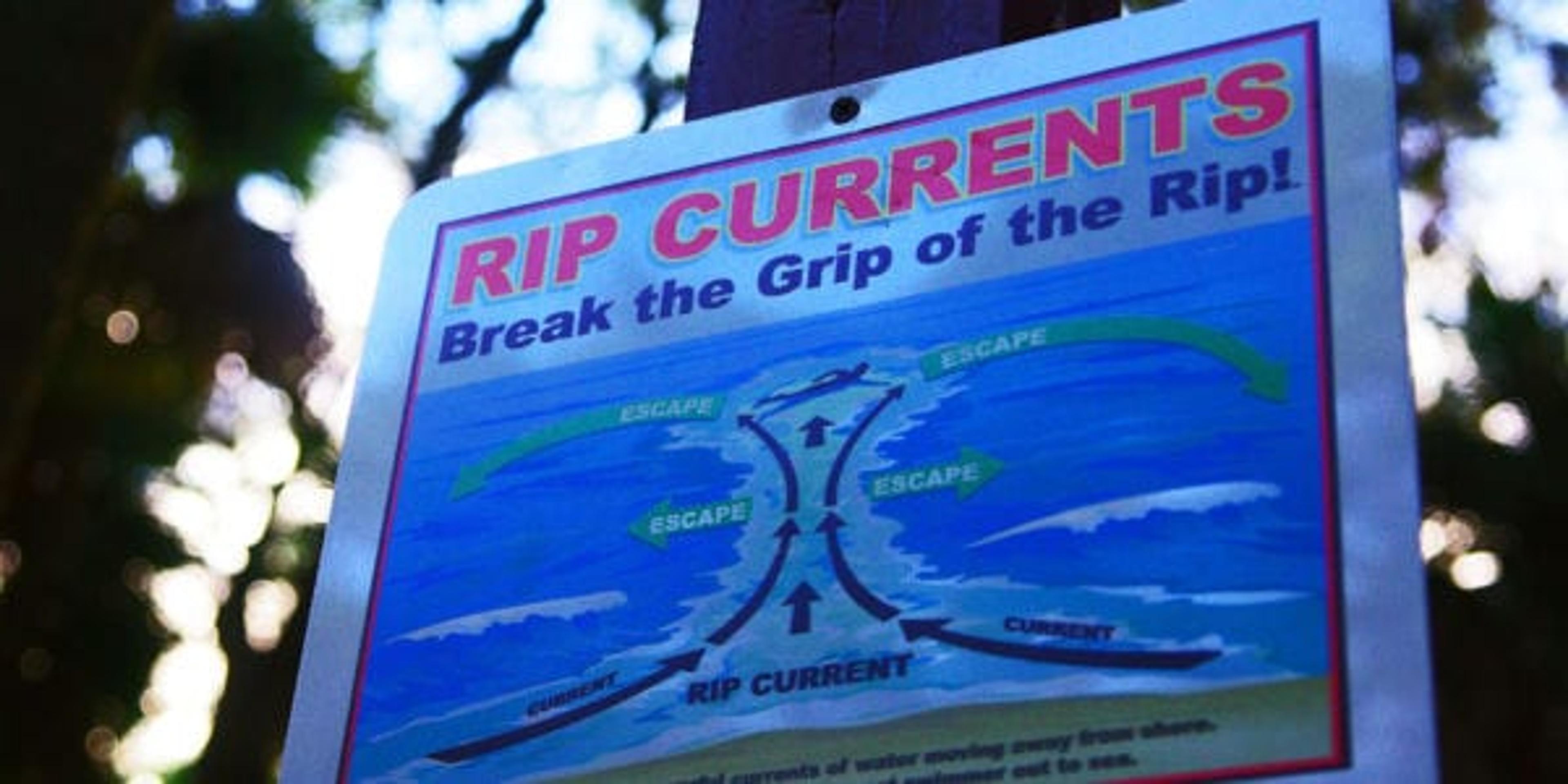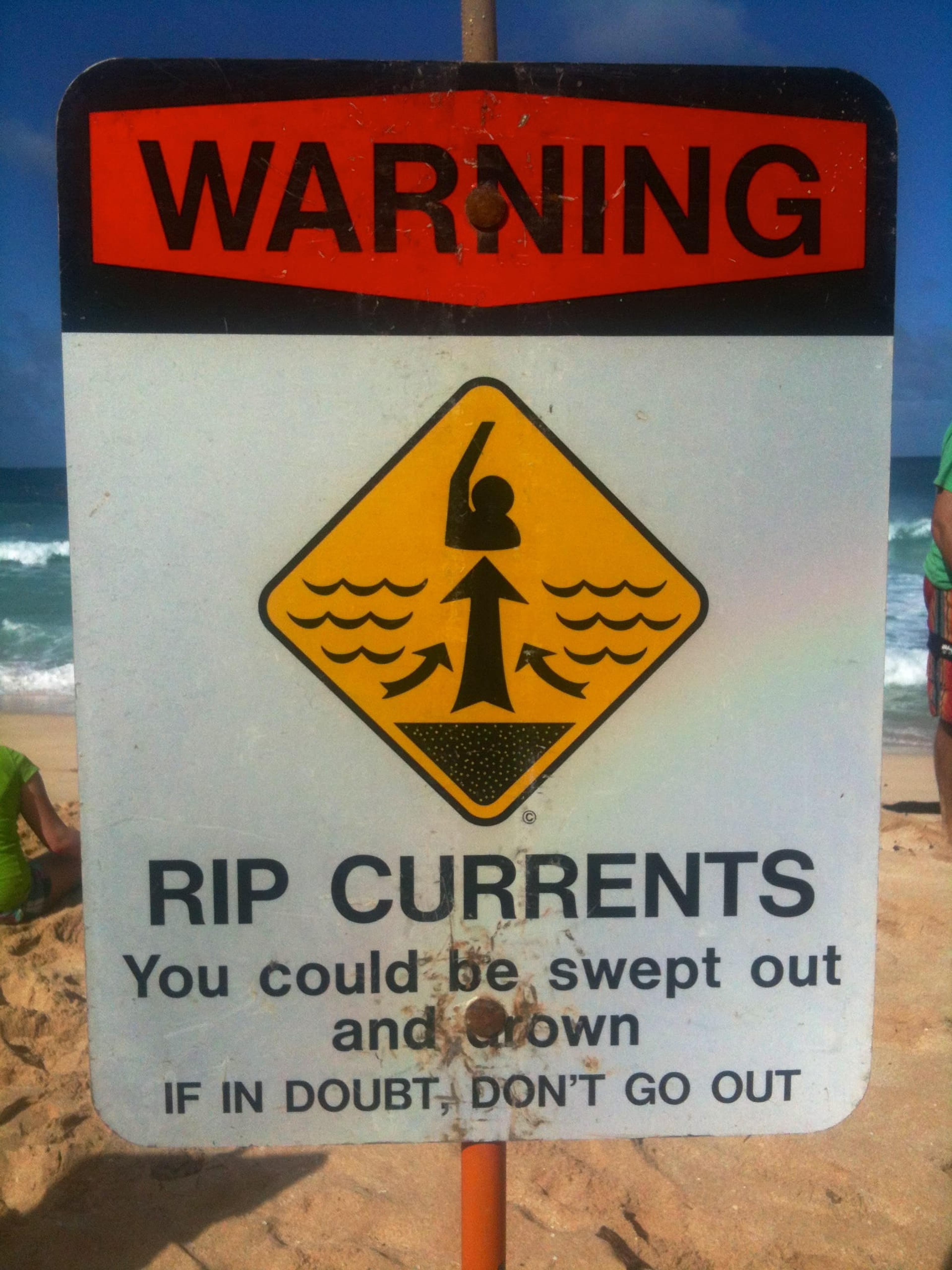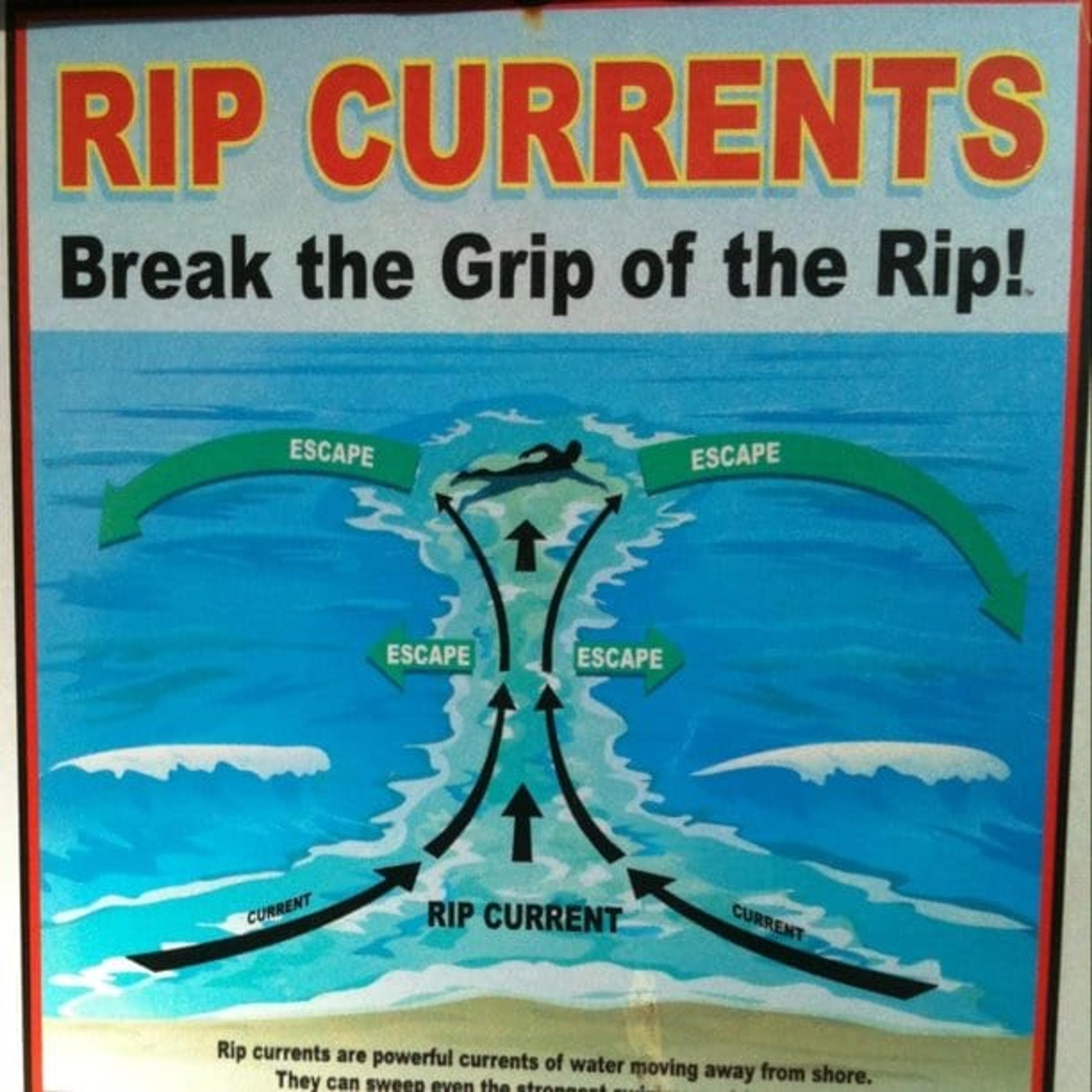A storyteller and editor by trade, I love creating and sharing helpful, informative content. I'm happily married and have two smart, funny daughters. Impromptu dance parties and glitter are an everyday reality. Running and reading are my go-to stress relievers and I really want to like yoga someday.
Rip Currents 101: Be Prepared to Avoid Danger
4 min read

When people head to the beach to enjoy a sunny day off with family or friends, the last thing on their mind is rip currents.
Although rip currents aren’t the most obvious danger at the beach, they have the power to turn a fun day into a serious predicament. Over the past several years, more people have died from rip currents than tornadoes, causing rip currents to be a seriously overlooked danger.
What is a Rip Current?
Naturally, as water crashes onto the shoreline, it gets pulled back out. This is how rip currents are created. They occur at generally deeper areas on the beach.
Water, once it breaks on the shore, flows out through these deeper channels back to sea. This funnel that is created by rushing water is known as a rip current. Rip currents measure anywhere from 10-100 feet in width and can extend for upwards of 100 feet from surf zones.
The strength of rip currents can also vary depending on the area or the weather, but they have been recorded to exceed five miles per hour, which is faster than an Olympic swimmer. This can cause them to be dangerous to every beach goer.
Why Rip Currents are Dangerous

Photo Credit: Eli Duke
Rip currents are dangerous because they can pull anyone out when they’re least expecting it.
While these currents don’t pull individuals underwater, they can carry people far away from the shore. This can happen very quickly due to the strong current. When this happens, individuals’ first instinct is to panic and try to fight the relentless current. This leads individuals to tire themselves out until they can no longer manage to stay afloat. While rip currents can turn deadly, they also can be navigated out of.
What To Do In a Rip Current
If you find yourself being pulled out from the beach at an alarming rate, do NOT panic. While this is scary, you need to remain calm. Don’t try to fight the current, instead consider floating while also yelling for help.
If you are alone at the beach, start trying to swim parallel to the shore. Like mentioned above, most rip currents are narrow. Swimming sideways allows you to not fight the current, but swim out of the narrow channel. Once out, steer clear of the current and continue swimming parallel back toward the beach allowing the waves to guide you back in.

Photo Credit: Aaron Fulkerson
If your child or a friend is in a rip current, do not jump in and try to save them. Many rip current deaths occur when individuals jump in and try to save a person.
If someone you know is in a rip current, call for help. If you have a flotation device in your belongings or nearby, throw that into the water, this will help the trapped person float. Remind the individual caught in the current to remain calm and float or swim parallel to the shore. It is hard to help from the beach but it could save not only your life but the caught swimmers’ life as well.
How to Avoid Rip Currents
Before swimming, scan the beach for rip currents. While these dangers are not always visible, you can typically spot one or two characteristics which can help you identify where they are located. Most rip currents are usually in deeper patches of the shoreline, so look for a darker blue color or a murkier color where there are no waves. Seeing clouds of sand where there aren’t waves indicates that there is a strong current underneath the surface.
Rip Current Conditions
Rip currents are usually at their strongest before, during or just after a storm. This is when wind conditions are high and waves in turn are larger and more powerful. Rip currents are also more prevalent along piers, low spots in sandbars, and jetties.
Make sure you and your loved ones discuss beach safety precautions before diving in so everyone is prepared next time you visit the beach. Even on the hottest days, there is a silent danger that can take anyone by surprise. Stay safe and be prepared!
If you enjoyed this blog, check out some similar articles below.
Main image photo credit: Charleston’s The Digitel










